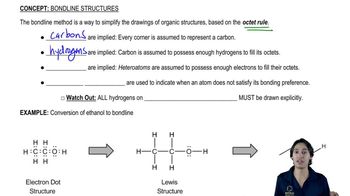Given the name, draw the structure of the following alkenes.
(b) ((Z)-1-cyclohexyl-2-methylhept-2-ene

 Verified step by step guidance
Verified step by step guidance Verified video answer for a similar problem:
Verified video answer for a similar problem:



 4:28m
4:28mMaster How to name different types of double bonds or rings with a bite sized video explanation from Johnny
Start learning